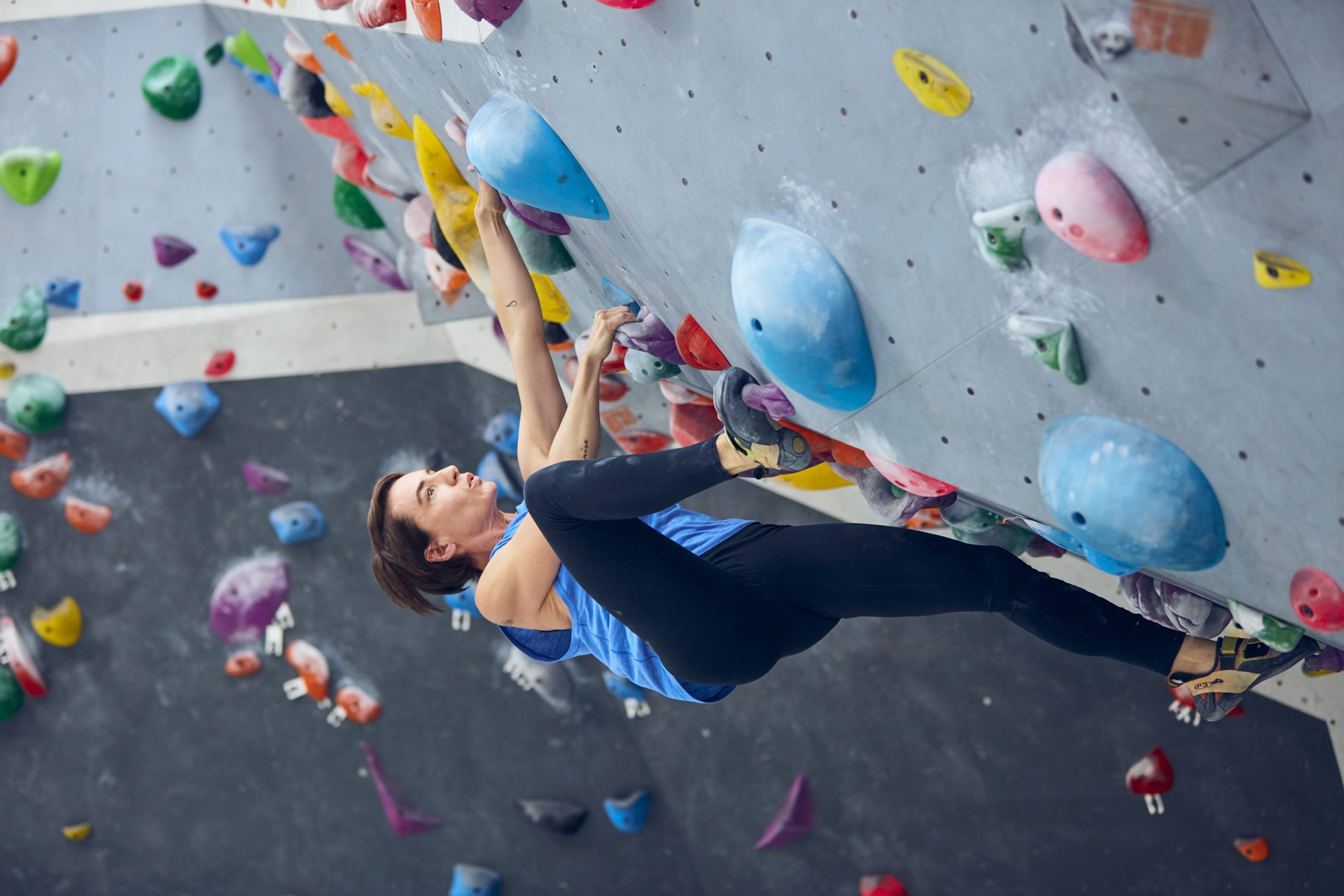
So, you don't know much about bouldering, but you're keen to give it a go. As it happens, bouldering is a fantastic all body aerobic exercise that doubles up as an effective way to boost your strength training. It comes with a range of benefits, and there's a lot you need to know before you get started.
Don't worry; we're here to make everything easier for you. Below, you'll find our comprehensive guide:
At its core, bouldering is essentially rock climbing. You have a rock climbing wall in front of you, and you still have to scale it.
There are a couple of crucial differences between bouldering and rock climbing. Primarily, you don't have any harnesses or safety support with bouldering. It's just you, your special bouldering shoes, and a few safety mats below to soften the blow if you fall. The distances you climb are substantially shorter, but the moves are more powerful. The aim isn't to climb a massive wall; it's more to accomplish specific routes and progress in the grading.
Bouldering has many fitness-related benefits that might shock you. Although the perception of bouldering as an activity is simple due to the short walls and rest opportunities, on the contrary, it's one of the best full body anaerobic plus aerobic workouts you can get and can be considered an alternative to traditional weight training.
So, if we were to look at the significant benefits, then these are the highlights:
You have to think quickly, and this develops your problem-solving ability.
Before you get started, it's crucial to understand how you should dress when you go bouldering. The good news is that there isn't a strict dress code. Mostly, you can wear what you'd typically wear to the gym; shorts/leggings, and a shirt. It's recommended that you wear clothing that's easier for you to move in and stretches well. If it's too restrictive - particularly in the lower body region - then it can be hard to make some of the moves.
However, there is one main thing you should go out and invest in; climbing shoes. Climbing shoes, sometimes called bouldering shoes, are specifically designed to make a beneficial impact on ability on the wall
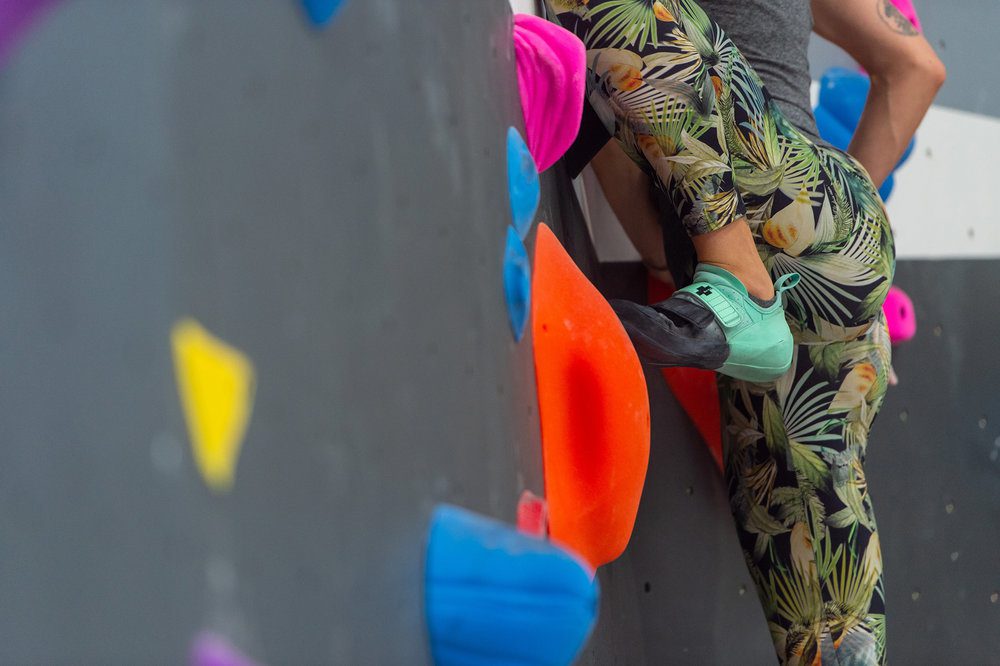
Climbing shoes, sometimes called bouldering shoes, are specifically designed to make a beneficial impact on ability on the wall. The idea behind them is a tight fitting, solid rubber compound shoes with an edge in the toe area. As a result, you can place your feet on the small little rock surfaces, which you certainly wouldn't be able to hold in regular shoes.
We won't lie, they're a little bit weird if you compare them to the shoes you usually wear! What's more, they feel strange when you try them on for the first time, as they will be tighter, stiffer, and thinner than traditional running shoes.
When it comes to bouldering for beginners, the best course of action is to get an essential all-around climbing shoe that has a neutral profile. Go for something flat, and also is firm in fit, but not very tight. Think of them as your training wheels; they help you get used to the unique style of footwear, so it's easier to progress to more extreme/aggressive varieties in the future. You shouldn't have to dread putting on your climbing shoes every session.
Essentially The job of a Bouldering shoe is to create your "interface" experience which is how you feel when you connect to a surface. The main aim is to find a bouldering shoe that works for you now and in the future as your climbing develops and improves as your experiences grows
Dean from the frontier has kindly contributed some expert advice on what to consider when investing a pair of shiny brand new climbing shoes
His suggestion for first-time climbers adhere to the three golden rules for your first pair of climbing shoes;
With this advice in hand here are some great suggestions below for first timers
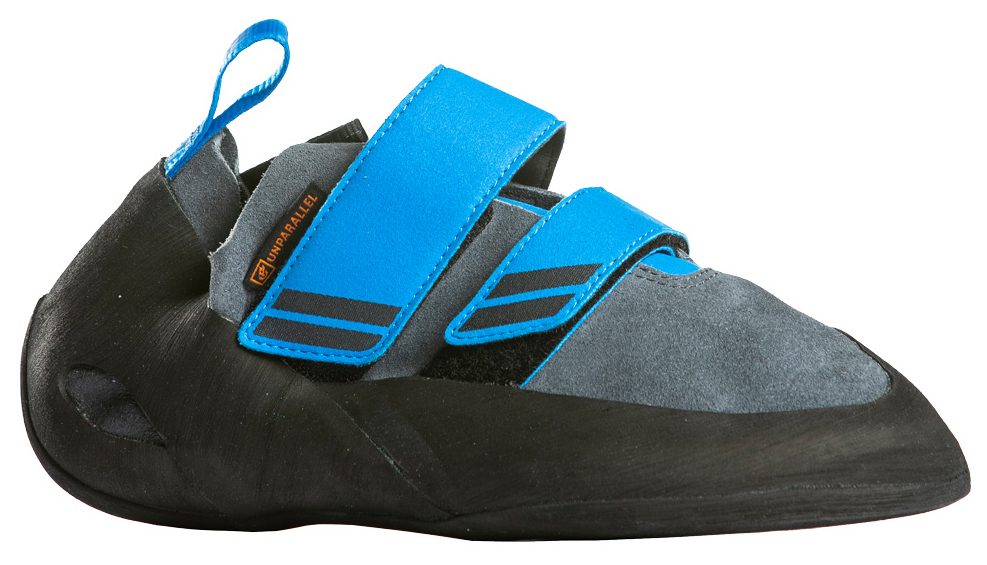
UNPARALLEL ENGAGE VCS (Mens)
The Engage is a medium-stiff climbing show, constructed of premium U.S. leather and featuring a comfort fit heel cup.
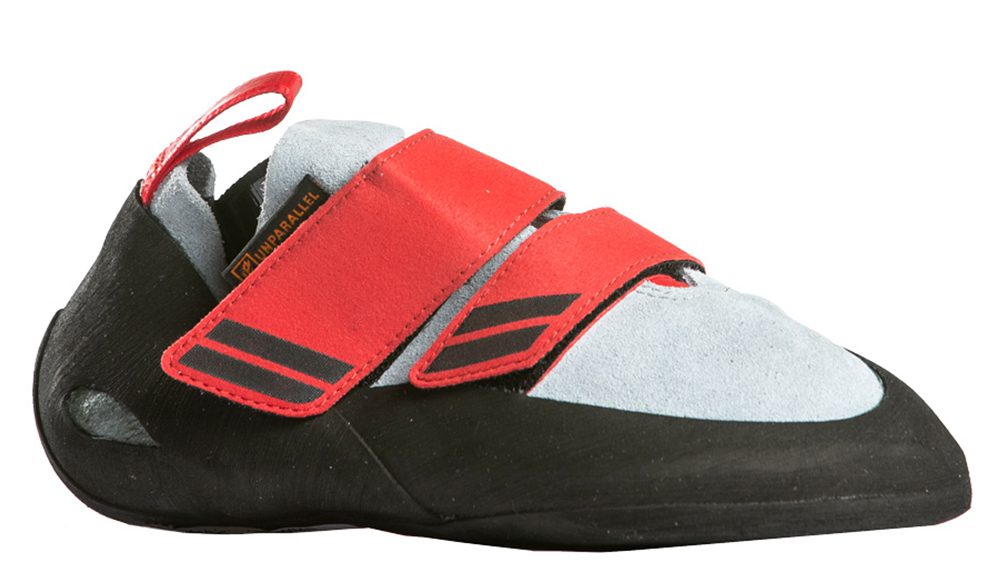
UNPARALLEL ENGAGE VCS (Womens)
Engineered with the female foot in mind the Engage W provides a comfortable flat lasted shoe.
When describing a shoe as either ‘soft’ or ‘stiff,’ the terms actually relate to the thickness of the rubber sole and the midsole (The midsole is the layer of material that sits between the rubber sole and the leather upper). A soft shoe is one that has a much thinner rubber on the bottom of the shoe while a stiff shoe boasts a thicker shoe. While both options are built to aid your climbing activities, they achieve it in very different ways.
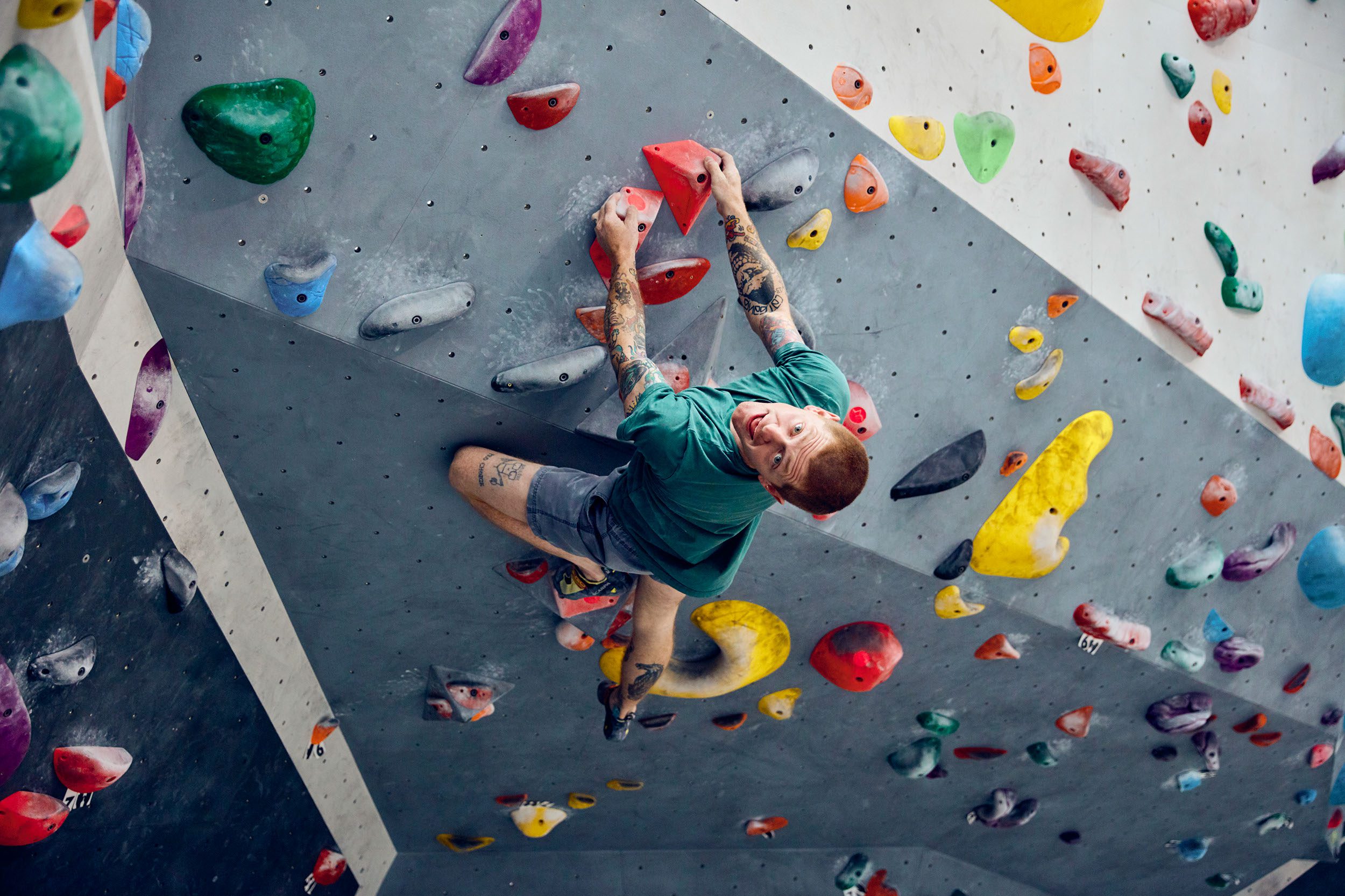
Bouldering can be pretty scary when you've not done it before. However, things are much easier if you're in a safe and comfortable environment. Bouldering can appear daunting from a first-time perspective, but with a safe and comfortable environment, those concerns quickly dissipate. If you want advice on the best way to get started, then here are a few tips to follow:
Yes, there are plenty of tips and tricks that beginners should take on board before they get going. We've already mentioned a few above; get all the right gear together, consistency in training, utilising a clinic/workshop, etc.
In conjunction with these tips, there are a few others that you'll find helpful as well:
Stretching is essential as you're going to experience lots of muscle fatigue when bouldering. You hold your body in the same position for seconds on end, which means the muscles are constantly contracting, and thus you'll experience "the pump". Stretching is also valuable in preventing injuries in tendons etc. Check out our article on stretching here
Bouldering is much easier when you have impressive grip strength. While yours will improve as the sessions progress, you should still work on it in your spare time. There are different modes of exercises you can do - like slower more accentuated movements while climbing. Hangboarding is a great way to isolate and train the body parts that climbers value above all else - but you’ve got to take it easy. You can’t get stronger when you’re injured! Just remember - with solid consistency and a gentle ramp up in intensity, you will get stronger on a hangboard. Or a bed slat. Seriously - it works.
If you want to get better at bouldering, then the best course is always to keep on bouldering. However, things like pull-ups and weight training will also give a higher edge in ability. Picking up weights routine will not only give you that strength/power improvement, but will also indirectly engage your core, improve the muscle networks that may be neglected, and also prevent injury by engaging/strengthening supporting muscles in the shoulder assembly etc.
Listen, you're not going to be an expert from day one. So, don't feel embarrassed if you're stuck on the simple beginner routes for a few weeks. Take it slow, and you will progress. Try to bite off too much too soon, as the risk of a strained muscle or hurting yourself will put you behind schedule on being on the walls improving!
On that note, we've come to the end of our guide to bouldering for beginners. If you still have any questions, or you'd look to book a private lesson, then feel free to contact us today. We can help kickstart your bouldering journey, so you'll soon be hanging from the walls in our gym!
Over 160,000 views!!!
Although the perception of bouldering as an activity is simple due to the short walls and rest opportunities, on the contrary, it's one of the best full body anaerobic plus aerobic workouts you can get and can be considered an alternative to traditional weight training. CLIMB FIT Instructor Jasmine will walk you through our top tips and some expert advice on how to improve your technique and stamina.